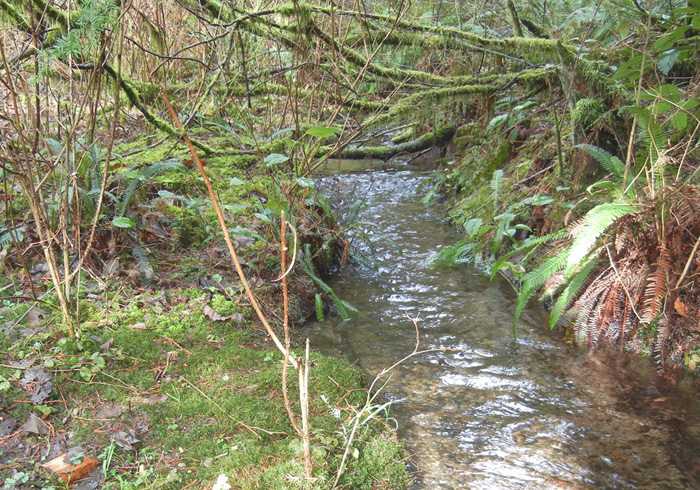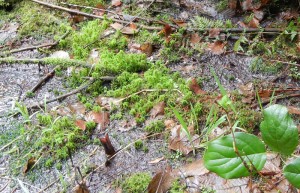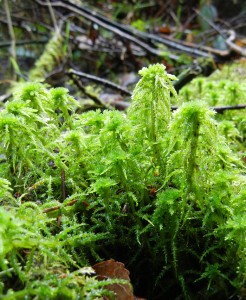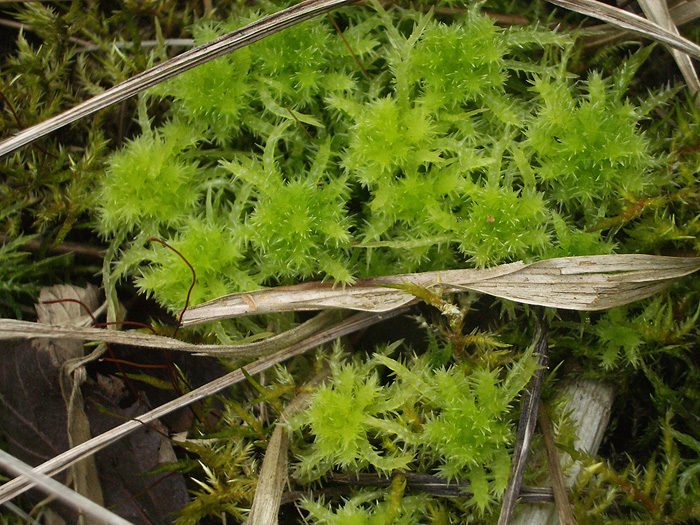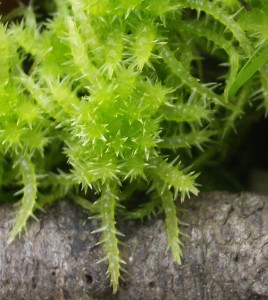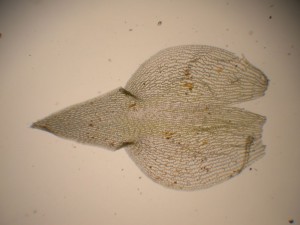Habitat
S. squarrosum is commonly found growing in woodlands, but can also grow in swamps or seepage sites, but not in normally in bogs.
It tolerates a certain amount of shade, and can also be found growing near a watercourse or by waterfalls.
Here it is growing with Atrichum.
Gametophyte
Overall structure:
This species ranges in color from pale green to yellow-green. Their inter-tangled shoots often form loose turfs and the gametophyte can at times be partially submerged. The squarrose leaves make it easy to identify in the field.
Stem:
The color of the stem can range from green to red-brown and the cortical cells do not have reinforcing fibrils.
Stem leaves:
The stem leaves are shorter than those found on branches and they typically have an ovate-lingulate to oblong-lingulate shape. The hyaline cells of the leaves are mostly not divided, however a few may be.
Branch fascicle:
This species has two divergent and two-three pendent branches. These branches not only have distinctive squarrose spreading leaves, but they also are long and tapered.
Branch stem:
S. squarrosum typically has one-two layers of cortical cells on the branch stem.
Branch leaves:
The leaves found on the branches are not only larger than those found on the stem but they give this species its “spiky” look due to their squarrose shape. A closer examination of the leaves will reveal that the basal area is broad. The apical area abruptly contracts to a point and distinctively curved away from the branch.
A cross section of the branch leaf will show that the chlorophyllose cells are ovate-triangular with the widest part being more exposed on the convex surface or equally on both surfaces.
Sporophyte
Overall structure:
The sporophytes are more or less abundant and mature in spring to mid summer.

